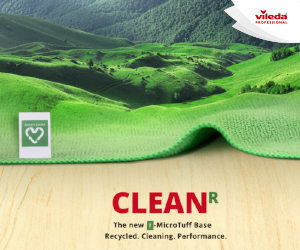Caring for the health of NHS staff is becoming widely recognised as important for their physical and mental wellbeing. Here, Christophe Clerc-Renaud, Senior Sales Director at Ergotron, discusses the principles of ergonomics and how NHS Trusts can use them to support their nurses and care staff – from minimising aches and pains to using technology more comfortably and efficiently.
The UK’s health services have a secret weapon: their caregivers. They undertake one of the most important roles in society, carefully balancing a combination of skills and empathy to embody the heart of patient care. However, many of us are guilty of forgetting about the long hours, physical demand and pressure of understaffing that nurses have to face every day. In a 2018 report from the Royal College of Nursing, it was revealed that in NHS hospitals, one in three nurses do not have time to carry out basic patient care. Of the 18,000 nurses surveyed, 36% cited staffing shortages as the reason for the inability to fulfil basic caring duties.
Stress and anxiety are almost expected among a nursing workforce that is overstretched and not able to cope with demand. According to the Royal College of Nursing, stressed, anxious nurses took close to one million days off ill between July 2018 and March this year. While it’s clear that staff shortages are responsible for exacerbating tremendous pressures on nurses, what can employers do to support the nurses who are in their employ, and not just as an afterthought? Is there anything that can be addressed in their working environment to help support the physical and mental wellbeing of these individuals who play such a vital, nurturing role?
Fortunately, there is. Embracing the principles of ergonomics, the science of refining the design of products to optimise them for human use, to ensure that nurses are as comfortable as possible in their working environment, goes a long way towards easing strain and stress and supporting physical and mental wellbeing. Here’s how.
Reduce the aches and pains
Manually lifting and moving patients, standing and walking for long periods of time are just some of the pressures facing nurses, all while working lengthy shifts. It is clear to see that nursing is a physically demanding job. This can affect a nurse's muscles and bones over time, resulting in back, neck, or other injuries.
According to the US Bureau of Labour Statistics, nurses are 48% more likely to have wrist and back sprains and strains. So, it's unsurprising that 49% reported feeling some level of discomfort while inputting charting data into a computerised point-of-care system. The introduction of Electronic Health Records (EHRs) means that interacting with technology is central to a caregiver's role, but it should not be a cause of pain.
One simple yet effective way of minimising the strain on overworked wrists and backs is to hone in on clinical design and ergonomic principles. Updating workstations with designed-for-purpose furniture enables more comfortable interaction with technology. For example, a traditional fixed computer at a nurse's station can be replaced with an adjustable wall-mounted workstation that enables the nurse to sit or stand to enter data. The keyboard and monitor can quickly be adjusted to suit them and means they can work safely and productively.
Put technology where it’s needed
On average, during a 12-hour shift, nurses can walk between four and five miles. It’s not surprising that it’s more commonly known as the ‘4-mile shift’, which can be physically tiring and stressful, especially if they have to walk distances to a stationary computer in order to input patient data for electronic health records (EHRs).
The migration from paper to electronic health records (EHR) was intended to improve accuracy and efficiency. However, there are commonly-missed workflow implications for nurses. The biggest of these being the need to have technology close at hand. If a nurse has to walk many metres to find a computer, there's a higher chance that critical patient information will be mislaid or misremembered, with potentially serious consequences. And all that walking means less time spent on patient care.
Forward-thinking healthcare organisations are implementing the Triangle of Care in order to tackle this issue. The Triangle of Care consists of using computer displays to bring the patient and caregiver together. Putting computers in each room, next to patients, means the caregiver has more time with the patient and can record data in the moment. By putting the Triangle of Care in place, caregivers benefit from reduced workloads and stress associated with EHRs. And that extra time with patients in turn increases job satisfaction and quality of care.
Tailor the solution for each caregiver
There is a plethora of options available for bringing computers closer to bedsides and patients – and it is important to remember that one size does not fit all solutions. Hospital rooms can be small and packed with equipment. One option is adding a wall-mount computer workstation that closes neatly away when not needed. Alternatively, a keyboard and monitor mounted on an arm can swing into action when needed and be pushed out of the way. Both options are height adjustable, so caregivers can sit or stand to enter data.
Sit-stand medical carts are an ideal solution for care on the move, since they make it simpler to bring a computer to where it’s needed. Medication delivery trolleys for example accommodate a computer, secure drawers and the option of a long-lasting battery. Documentation carts at their most simple accommodate a laptop or tablet, enabling it to be wheeled anywhere quickly and safely. Some cart designs also provide spaces for scanners, wipes and notes. For caregivers who do a lot of data inputting, ergonomically angled keyboards and height-adjustable monitors are kinder to wrists and backs.
Nurses truly are the ties that bind patients and their care together. It is within the best interests of the patients who rely on them for nurses to have comfortable work surroundings, and not be stressed or physically compromised. As the NHS nurse workforce comes under increasing pressure, it is crucial to care for them, so they can continue to care for others.










